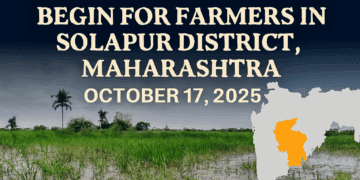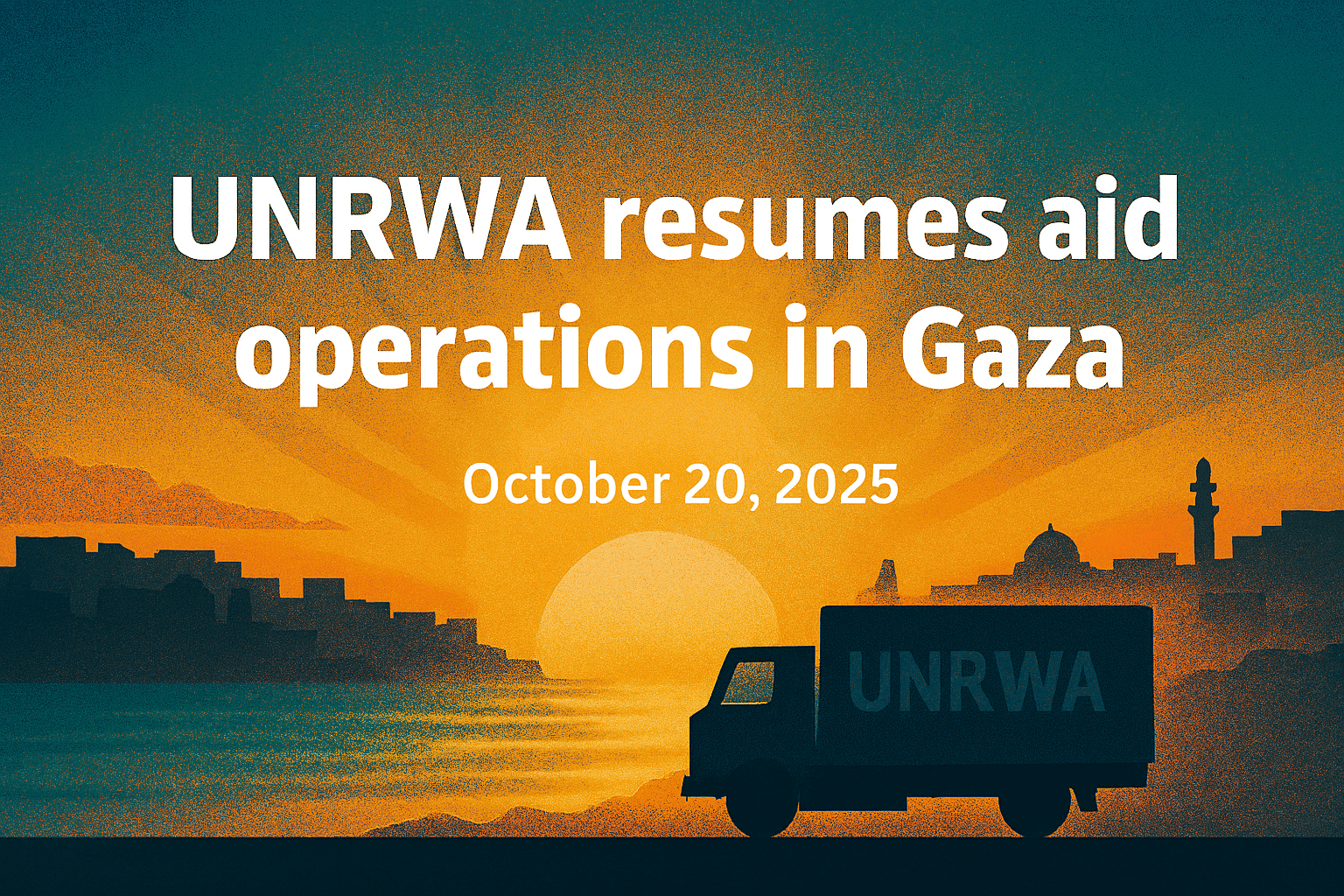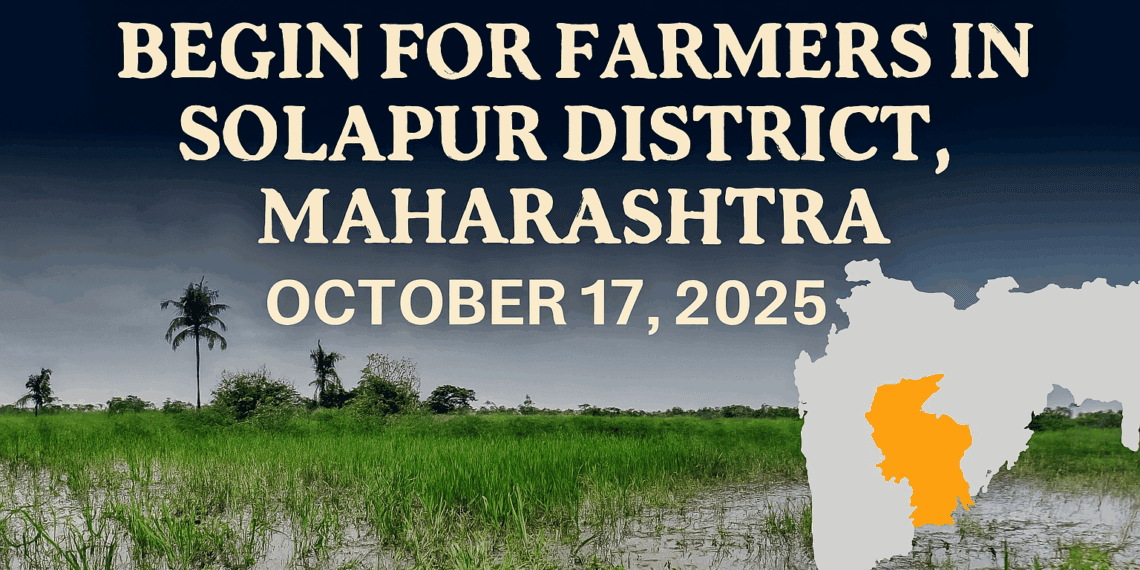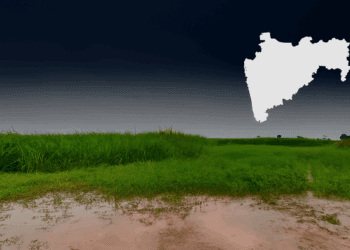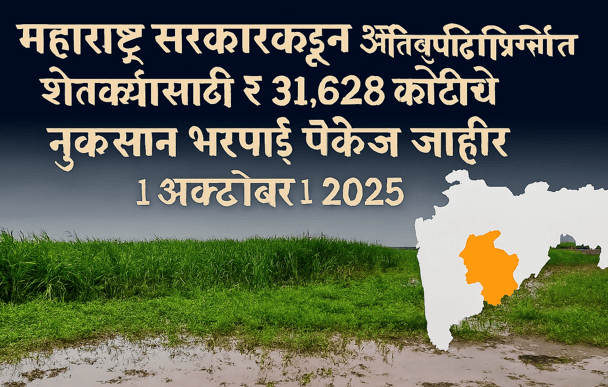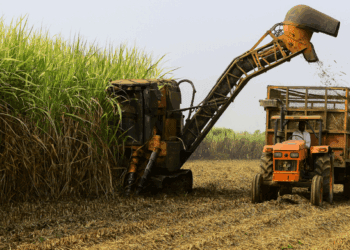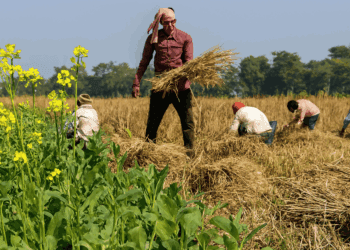On 17 October 2025, coordinated flood relief operations were launched across Solapur district in Maharashtra, following weeks of torrential rainfall that led to widespread agricultural damage and livestock distress. The initiative is being spearheaded by the Training and Education Centre (TEC) of ICAR-IVRI, Pune, in collaboration with the State Animal Husbandry Department, local Krishi Vigyan Kendras (KVKs), and several non-governmental organizations. The response aims to stabilize rural livelihoods, restore animal health, and prepare farmers for post-flood recovery.
Background: Flood Impact in Solapur
Solapur, a semi-arid region known for its jowar, cotton, and soybean cultivation, was hit by flash floods in early October due to a delayed and intensified monsoon. Rainfall exceeded 300 mm in several talukas, submerging fields and damaging irrigation infrastructure. Villages in Karmala, Barshi, Pandharpur, and Mangalwedha reported crop losses, livestock fatalities, and displacement of farmer families.
Relief Activities Conducted
- Animal Health Camps: Mobile veterinary units were deployed in six flood-affected villages to provide deworming, vaccinations, and nutritional supplements to cattle, goats, and poultry.
- Kisan Goshtis: Interactive farmer meetings were held to educate communities on post-flood soil management, fodder planning, and disease prevention.
- Livestock Protection: Emergency shelters and fodder banks were set up to prevent starvation and exposure-related illnesses.
Impact Assessment
According to preliminary data from the Solapur Agriculture Office:
- Crop Loss: Over 12,000 hectares of soybean, cotton, and jowar were damaged, with yield estimates dropping by 35 to 50 percent.
- Livestock Affected: More than 3,500 cattle and goats were exposed to waterborne infections, with 400 reported fatalities.
- Farmer Families Displaced: Approximately 2,100 households were temporarily relocated to relief shelters.
Government Response
The Maharashtra Agriculture Department has announced a ₹50 crore emergency package for flood-hit talukas. Compensation for crop loss will be disbursed via Direct Benefit Transfer (DBT) after field verification. The district collector has urged farmers to register damage claims through the MahaKrishi portal. Additionally, the Animal Husbandry Department has vaccinated over 22,000 animals with HS-BQ vaccines based on risk assessments.
NGO and Institutional Support
- Reliance Foundation: Launched a wide-ranging recovery initiative for 4,000 severely affected families in Solapur and Beed districts. Their teams are distributing food kits, water purifiers, and livestock feed while coordinating with local authorities for public health risk management.
- BAIF Development Research Foundation: Providing fodder kits, veterinary care, and psychological counseling for distressed farmers.
- Krishi Vigyan Kendra (KVK): Offering soil testing, replanting guidance, and training on climate-resilient cropping systems.
- ICAR-IVRI: Deploying mobile vet units and training local youth in livestock care and disease surveillance.
Voices from the Ground
“Our jowar fields were submerged for four days. Without fodder, our cattle are starving,” said a farmer from Barshi. “We lost half our crop and two buffaloes. The relief camps are helping, but we need long-term support.”
A veterinary officer added, “We’re working round the clock to prevent disease outbreaks. The camps are stabilizing the situation, but we need more manpower and medical supplies.”
Expert Commentary
“Post-flood recovery must include soil rehabilitation and mental health support for farmers,” said Dr. H.P. Aithal, Principal Scientist at TEC Pune. “We’re integrating climate resilience into our outreach programs and encouraging farmers to adopt mixed cropping and agroforestry models.”
Dr. Aithal also emphasized the need for decentralized fodder banks and community-led veterinary surveillance to prevent future livestock crises.
Challenges Ahead
- Infrastructure Damage: Several irrigation canals and bunds were breached, affecting water supply for rabi sowing.
- Input Shortage: Seed and fertilizer availability remains uncertain due to disrupted supply chains.
- Mental Health: Many farmers are experiencing anxiety and depression due to financial losses and displacement.
Policy Recommendations
- Expand crop insurance coverage to include flash flood events and livestock mortality.
- Introduce emergency credit lines for replanting and input procurement.
- Strengthen veterinary infrastructure in rural talukas with mobile units and telemedicine.
- Launch awareness campaigns on climate-adaptive farming and disaster preparedness.
Looking Ahead
Relief efforts will continue through October, with plans to expand to Osmanabad and Latur if needed. The state government is also considering a crop insurance waiver for affected zones and a special credit line for replanting expenses. KVKs are preparing demonstration plots to guide farmers on rabi crop selection and soil recovery techniques.
Meanwhile, Reliance Foundation and other NGOs are working to restore livelihoods through skill training, micro-enterprise support, and community mobilization. The focus is on building long-term resilience rather than short-term relief.
Conclusion
The flood relief efforts in Solapur district reflect a coordinated response to climate-induced agricultural distress. As Maharashtra grapples with erratic weather patterns, proactive support systems and community resilience will be key to safeguarding rural livelihoods. The integration of veterinary care, crop recovery, and mental health support marks a holistic approach to disaster response—one that could serve as a model for other vulnerable regions across India.
With the rabi season approaching, timely intervention and sustained support will determine whether Solapur’s farmers can bounce back from this crisis. The coming weeks will be critical in shaping the district’s agricultural recovery and long-term climate preparedness.
